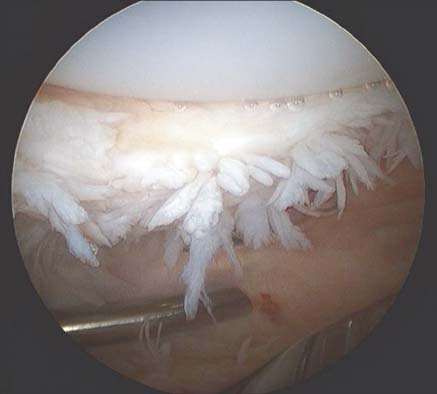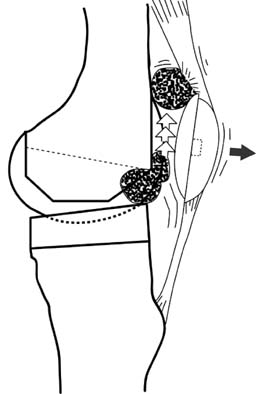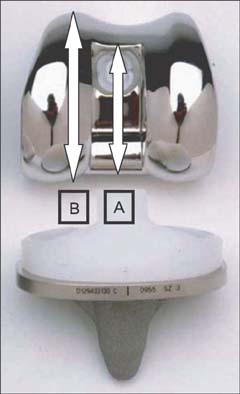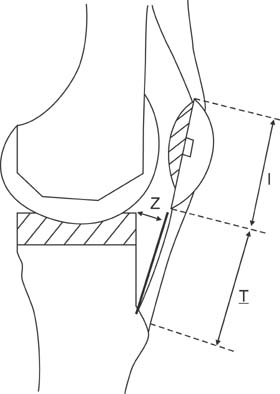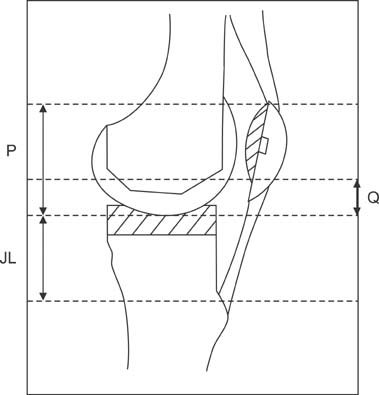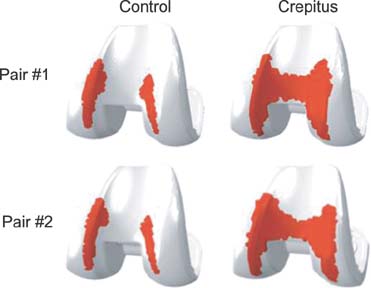Clin Orthop Surg.
2014 Mar;6(1):9-19. 10.4055/cios.2014.6.1.9.
Patellofemoral Crepitus after Total Knee Arthroplasty: Etiology and Preventive Measures
- Affiliations
-
- 1Colorado Joint Replacement, Denver, CO, USA. kendallslutzky@centura.org
- 2Department of Biomedical Engineering, University of Tennessee, Knoxville, TN, USA.
- 3Department of Bioengineering, University of Denver, Denver, CO, USA.
- 4Department of Orthopaedics, University of Colorado School of Medicine, Denver, CO, USA.
- KMID: 1737626
- DOI: http://doi.org/10.4055/cios.2014.6.1.9
Abstract
- Patellofemoral crepitus and clunk syndrome are infrequent, yet troublesome complications of total knee arthroplasty with a reported incidence of 0%-18%. They are primarily associated with implantation of posterior cruciate substituting designs. These entities are the result of peripatellar fibrosynovial hyperplasia at the junction of the superior pole of the patella and the distal quadriceps tendon which becomes entrapped within the superior aspect of the intercondylar box of the femoral component during knee flexion. When the knee extends, a crepitant sensation occurs as the fibrosynovial tissue exits the intercondylar box. Numerous etiologies have been proposed such as femoral component designs with a high intercondylar box ratio, previous knee surgery, reduced patellar tendon length, thinner patellar components, reduced patella-patellar component composite thickness, and smaller femoral components. Preventative measures include choice of femoral components with a reduced intercondylar box ratio, use of thicker patellar components, avoidance of over-resection of the patella, and debridement of the fibrosynovial tissue at the time of knee arthroplasty. Most patients with crepitus are unaware of the problem or have minimal symptoms so that no treatment is required. If significant disability is incurred, symptoms can be eliminated in a high percentage of patients with arthroscopic debridement of the fibrosynovial hyperplasia.
MeSH Terms
Figure
Cited by 1 articles
-
Noise around the Knee
Sang Jun Song, Cheol Hee Park, Hu Liang, Sang Jun Kim
Clin Orthop Surg. 2018;10(1):1-8. doi: 10.4055/cios.2018.10.1.1.
Reference
-
1. Wing CK, Kwok-Hing C. Sixteen years' result of posterior-stabilized TKA. J Knee Surg. 2012; 25(3):245–248.2. Thadani PJ, Vince KG, Ortaaslan SG, Blackburn DC, Cudiamat CV. Ten- to 12-year followup of the Insall-Burstein I total knee prosthesis. Clin Orthop Relat Res. 2000; (380):17–29.3. Meftah M, Ranawat AS, Ranawat CS. The natural history of anterior knee pain in 2 posterior-stabilized, modular total knee arthroplasty designs. J Arthroplasty. 2011; 26(8):1145–1148.4. Figgie HE 3rd, Goldberg VM, Heiple KG, Moller HS 3rd, Gordon NH. The influence of tibial-patellofemoral location on function of the knee in patients with the posterior stabilized condylar knee prosthesis. J Bone Joint Surg Am. 1986; 68(7):1035–1040.5. Insall JN, Lachiewicz PF, Burstein AH. The posterior stabilized condylar prosthesis: a modification of the total condylar design: two to four-year clinical experience. J Bone Joint Surg Am. 1982; 64(9):1317–1323.6. Hozack WJ, Rothman RH, Booth RE Jr, Balderston RA. The patellar clunk syndrome: a complication of posterior stabilized total knee arthroplasty. Clin Orthop Relat Res. 1989; (241):203–208.7. Niikura T, Tsumura N, Tsujimoto K, Yoshiya S, Kurosaka M, Shiba R. Patellar clunk syndrome after TKA with cruciate retaining design: a report of two cases. Orthopedics. 2008; 31(1):90.8. Sringari T, Maheswaran SS. Patellar clunk syndrome in patellofemoral arthroplasty: a case report. Knee. 2005; 12(6):456–457.9. Beight JL, Yao B, Hozack WJ, Hearn SL, Booth RE Jr. The patellar "clunk" syndrome after posterior stabilized total knee arthroplasty. Clin Orthop Relat Res. 1994; (299):139–142.10. Clarke HD, Fuchs R, Scuderi GR, Mills EL, Scott WN, Insall JN. The influence of femoral component design in the elimination of patellar clunk in posterior-stabilized total knee arthroplasty. J Arthroplasty. 2006; 21(2):167–171.11. Fukunaga K, Kobayashi A, Minoda Y, Iwaki H, Hashimoto Y, Takaoka K. The incidence of the patellar clunk syndrome in a recently designed mobile-bearing posteriorly stabilised total knee replacement. J Bone Joint Surg Br. 2009; 91(4):463–468.12. Ip D, Ko PS, Lee OB, Wu WC, Lam JJ. Natural history and pathogenesis of the patella clunk syndrome. Arch Orthop Trauma Surg. 2004; 124(9):597–602.13. Lonner JH, Jasko JG, Bezwada HP, Nazarian DG, Booth RE Jr. Incidence of patellar clunk with a modern posterior-stabilized knee design. Am J Orthop (Belle Mead NJ). 2007; 36(10):550–553.14. Ranawat AS, Ranawat CS, Slamin JE, Dennis DA. Patellar crepitation in the P.F.C. sigma total knee system. Orthopedics. 2006; 29:9 Suppl. S68–S70.15. Schroer WC, Diesfeld PJ, Reedy ME, LeMarr A. Association of increased knee flexion and patella clunk syndrome after mini-subvastus total knee arthroplasty. J Arthroplasty. 2009; 24(2):281–287.16. Yau WP, Wong JW, Chiu KY, Ng TP, Tang WM. Patellar clunk syndrome after posterior stabilized total knee arthroplasty. J Arthroplasty. 2003; 18(8):1023–1028.17. Pollock DC, Ammeen DJ, Engh GA. Synovial entrapment: a complication of posterior stabilized total knee arthroplasty. J Bone Joint Surg Am. 2002; 84(12):2174–2178.18. Ip D, Wu WC, Tsang WL. Comparison of two total knee prostheses on the incidence of patella clunk syndrome. Int Orthop. 2002; 26(1):48–51.19. Maloney WJ, Schmidt R, Sculco TP. Femoral component design and patellar clunk syndrome. Clin Orthop Relat Res. 2003; (410):199–202.20. Anderson MJ, Becker DL, Kieckbusch T. Patellofemoral complications after posterior-stabilized total knee arthroplasty: a comparison of 2 different implant designs. J Arthroplasty. 2002; 17(4):422–426.21. Shoji H, Shimozaki E. Patellar clunk syndrome in total knee arthroplasty without patellar resurfacing. J Arthroplasty. 1996; 11(2):198–201.22. Frye BM, Floyd MW, Pham DC, Feldman JJ, Hamlin BR. Effect of femoral component design on patellofemoral crepitance and patella clunk syndrome after posterior-stabilized total knee arthroplasty. J Arthroplasty. 2012; 27(6):1166–1170.23. Dennis DA, Kim RH, Johnson DR, Springer BD, Fehring TK, Sharma A. The John Insall Award: control-matched evaluation of painful patellar Crepitus after total knee arthroplasty. Clin Orthop Relat Res. 2011; 469(1):10–17.24. Dajani KA, Stuart MJ, Dahm DL, Levy BA. Arthroscopic treatment of patellar clunk and synovial hyperplasia after total knee arthroplasty. J Arthroplasty. 2010; 25(1):97–103.25. Koh YG, Kim SJ, Chun YM, Kim YC, Park YS. Arthroscopic treatment of patellofemoral soft tissue impingement after posterior stabilized total knee arthroplasty. Knee. 2008; 15(1):36–39.26. Wong JW, Yau PW, Chiu PK. Arthroscopic treatment of patellar symptoms in posterior stabilized total knee replacement. Int Orthop. 2002; 26(4):250–252.27. Takahashi M, Miyamoto S, Nagano A. Arthroscopic treatment of soft-tissue impingement under the patella after total knee arthroplasty. Arthroscopy. 2002; 18(4):E20.28. Lucas TS, DeLuca PF, Nazarian DG, Bartolozzi AR, Booth RE Jr. Arthroscopic treatment of patellar clunk. Clin Orthop Relat Res. 1999; (367):226–229.29. Messieh M. Management of patellar clunk under local anesthesia. J Arthroplasty. 1996; 11(2):202–203.30. Vernace JV, Rothman RH, Booth RE Jr, Balderston RA. Arthroscopic management of the patellar clunk syndrome following posterior stabilized total knee arthroplasty. J Arthroplasty. 1989; 4(2):179–182.31. Hoops HE, Johnson DR, Kim RH, et al. Control-matched computational evaluation of tendo-femoral contact in patients with posterior-stabilized total knee arthroplasty. J Orthop Res. 2012; 30(9):1355–1361.
- Full Text Links
- Actions
-
Cited
- CITED
-
- Close
- Share
- Similar articles
-
- Total Knee Arthroplasty without Patellar Resurfacing in Moderate to Severe Patellofemoral Arthritis
- The Effect of Patellofemoral Overstuffing in Total Knee Arthroplasty
- Radiologic Patellar Change and Clinical Results of Total Knee Arthroplasty without Patella Resurfacing
- Noise around the Knee
- Functional and Radiological Outcomes of Patella Retaining Total Knee Arthroplasty: Minimun 5-Year Follow-up Results

